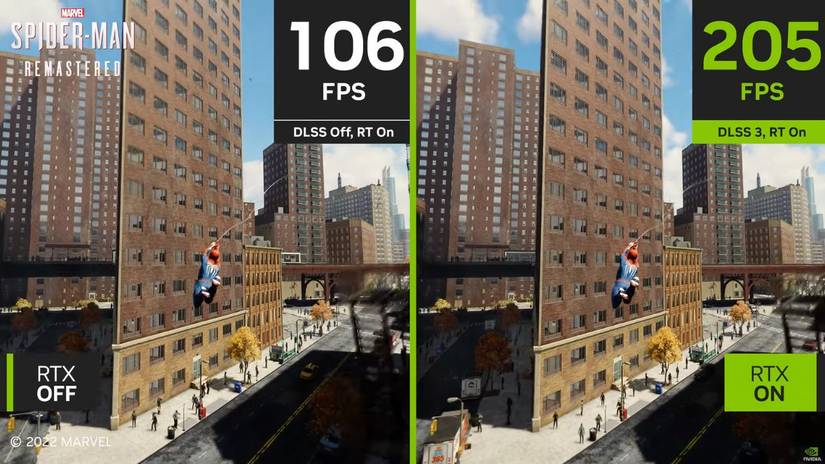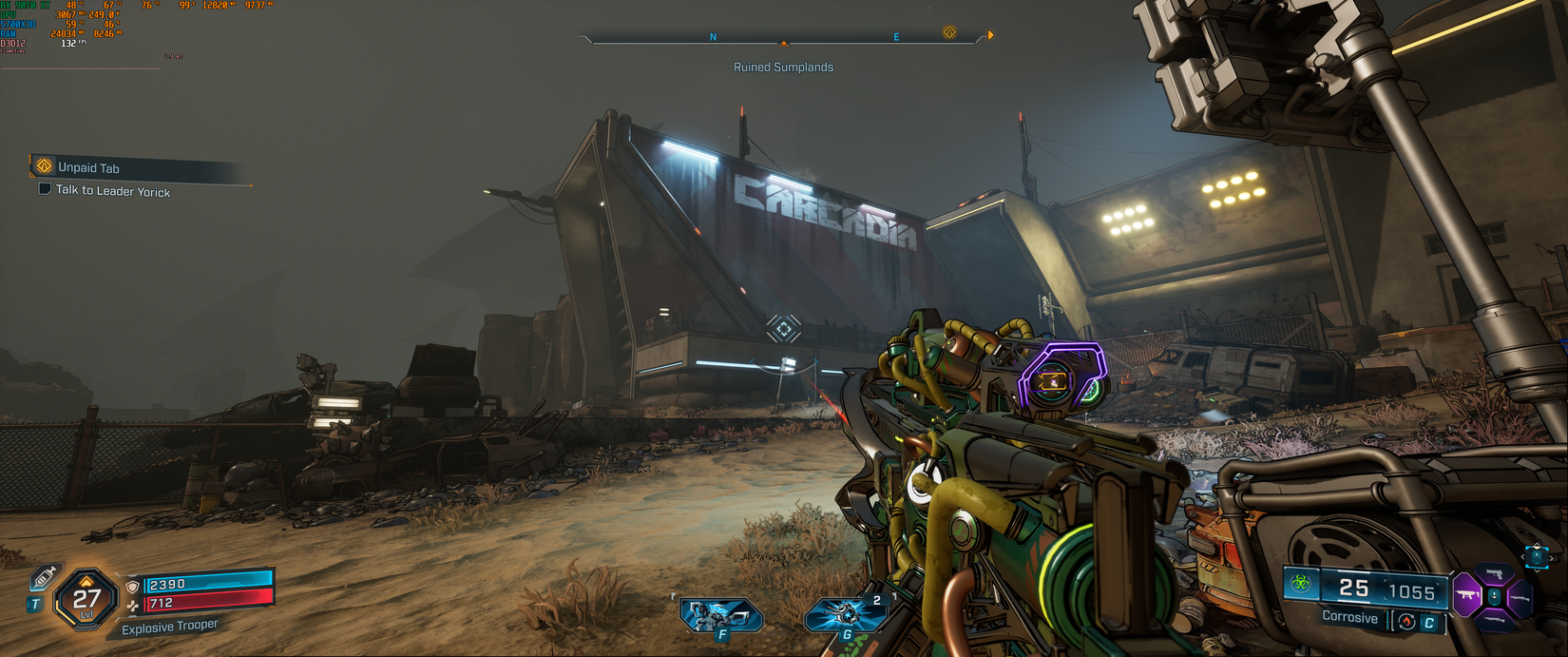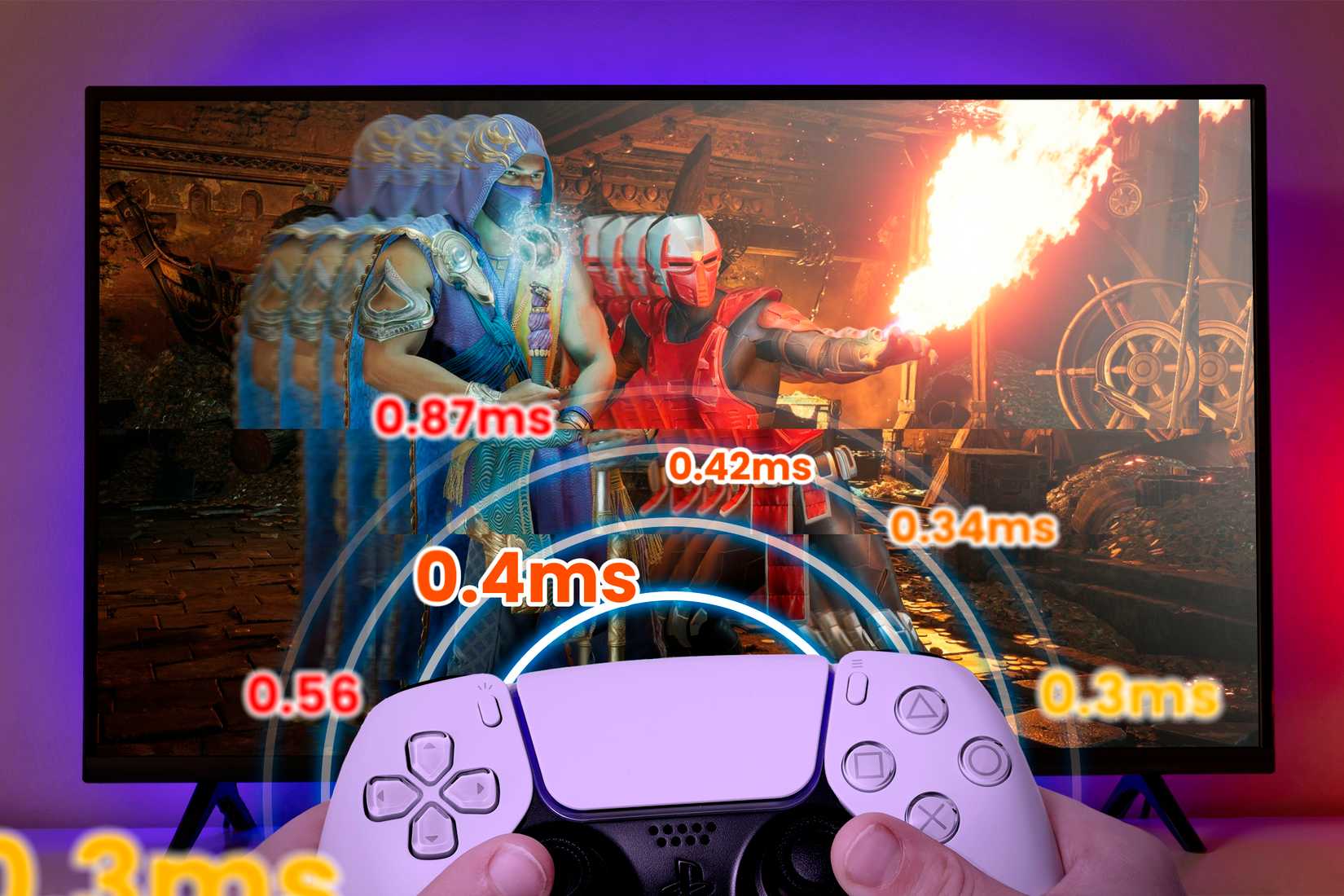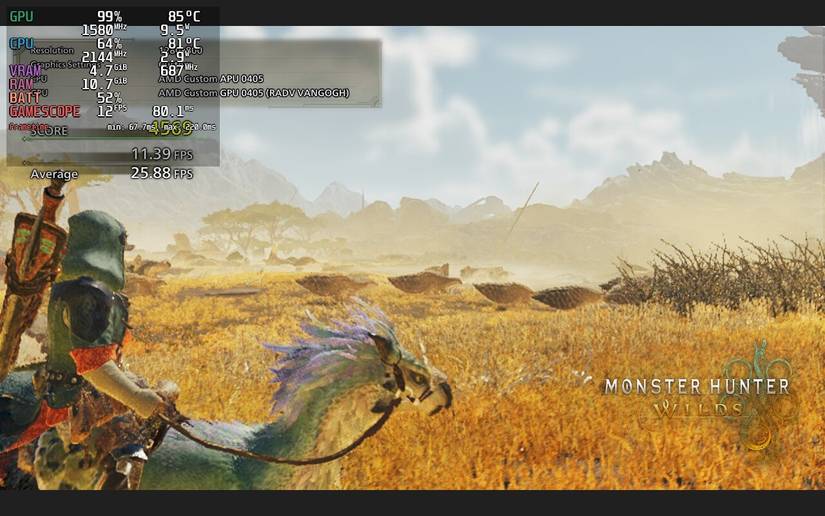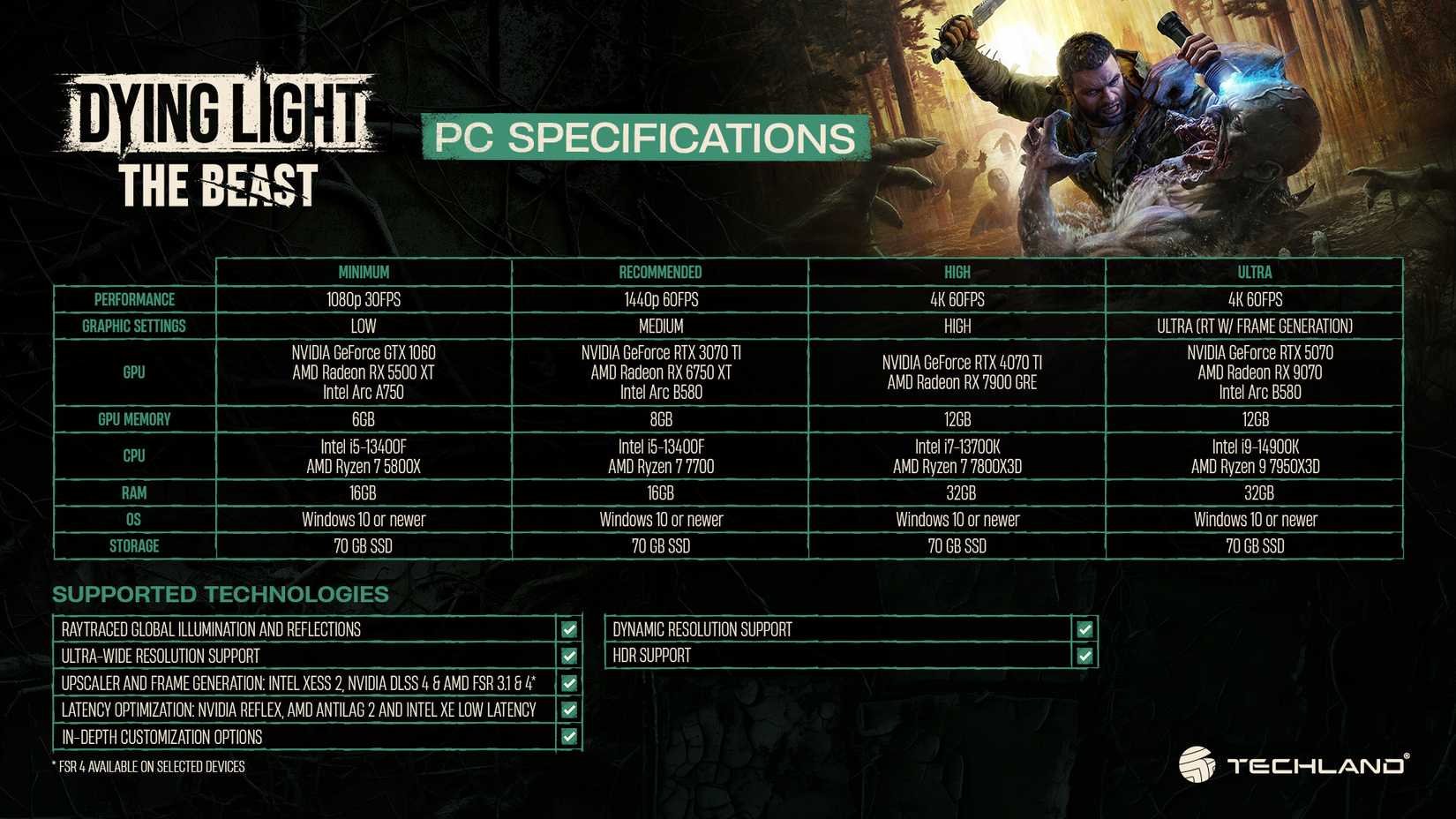[ad_1]
You may have noticed that some PC games now list frame generation as part of their system requirements. The issue here is that system requirements for PC games usually target 60 FPS performance, and playing games at 60 FPS with frame generation feels anything but good.
Frame Generation Doesn’t Improve Performance Like Upscaling Does
I’m fine with developers making upscaling, such as DLSS or FSR, part of PC system requirements that target 60 FPS performance. Sure, using upscaling to reach 60 FPS is far from perfect, especially at 1080p.
But DLSS and FSR 4 often look better than native rendering, even at 1080p when it comes to DLSS 4 upscaling (I was gobsmacked when I saw just how impressive DLSS 4 looks at 1080p back when I was still rocking an RTX 3070).
Sure, in most cases you won’t have perfect image quality, but you’ll be able to play a game on a GPU that would’ve otherwise struggled to even reach 40 FPS at native resolution.
On the other hand, frame generation doesn’t offer a real performance uplift in the way upscaling does. When it comes to upscaling, your GPU is still rendering each frame shown on your monitor, meaning that the input latency—the time between you moving your mouse or controller and that movement showing on your monitor—is getting lower as the frame rate increases.
For instance, 60 FPS performance means at least 16.66 ms of input latency, since 60 frames are rendered per second. At 100 FPS, the minimum latency is around 10 ms, as each frame takes 10 ms to render. Of course, there are additional sources of input latency, such as your monitor and other PC components, that add up to a higher total, but you get the gist.
Frame generation can also increase the frame rate. But instead of lowering input latency, it increases it. It’s because frame gen works by implanting a generated frame between two frames rendered by the GPU. In the case of NVIDIA’s DLSS 4 multi-frame generation tech, you can have two or even three generated frames inserted between two frames rendered by the GPU.
The algorithms responsible for generating these in-between, or “fake,” frames take two frames rendered by the graphics card and attempt to “guess” what the in-between frames would look like, create them, and then place them between two “real” frames. The results aren’t perfect, but good enough for most people not to notice slight inaccuracies found in the generated frames.
What people do notice is the increased input lag caused by the generated frames and by the processing of real frames needed to create those “fake” ones. Since generated frames are created by an algorithm, and not rendered, moving your mouse does nothing when those frames are shown, which leads to increased input lag.
So, we can say that frame generation doesn’t improve overall performance, because that would also entail reduced input lag in addition to a higher frame rate. What frame generation does is smooth motion, making it seem like the game is running at a higher frame rate but with higher input latency than if the GPU had rendered all the frames itself.
Games Running at 60 FPS With Frame Generation Suffer From High Input Lag
When you have a base frame rate of 60 FPS, where each frame is rendered by the GPU, the total input lag is decently low. Turning on frame generation and increasing the frame rate to 120 FPS or so can still feel quite responsive, especially if you own a monitor with low input latency and response time. The higher the base frame rate, the less “floaty” the game feels with frame generation enabled.
On top of that, at high frame rates, the visual artifacts caused by frame generation are virtually imperceptible because the performance is so high that your eyes can’t notice them in most cases.
I’m currently playing Borderlands 4 with most settings maxed out and frame generation enabled, and my frame rate is always above 110 FPS, with my base frame rate being around 60 FPS. I definitely notice the added input lag compared to playing a game that runs at 110 FPS without frame gen, but the added latency is low enough for an enjoyable experience.
However, if you have a base frame rate of only 30 FPS that then gets doubled to 60 FPS with frame generation, your minimum input lag will be 33.33ms. Add in latency from other components and frame generation, and we’re talking about very high input latency that most people will perceive. High input latency is a major reason why games running at 30 FPS feel so floaty and laggy, and why more and more gamers ask for games to offer 60 FPS performance modes even on consoles.
Granted, using frame generation on a base frame rate of just 30 FPS to double it to 60 FPS does feel smooth, since your monitor is indeed delivering 60 frames per second. However, the game feels floaty due to the increased input lag. Worse still, since the frame rate is low to begin with, you also start to notice visual artifacts during generated frames. So you’re not only getting higher input lag but also worse image quality.
The end result is a floaty, visually messy experience that feels smooth but makes the game less responsive than it would be at 30 FPS without frame generation.
Making Frame Generation Part of System Requirements Is Unacceptable
This is why making frame generation part of system requirements is unacceptable. If a game requires frame generation to reach 60 FPS with minimum or recommended specs, it means the listed CPU and GPU combos can actually only deliver 30 “real” frames. In that case, developers should either list 30 FPS as the expected performance or specify hardware capable of providing a “real” 60 FPS performance as the recommended requirements.
But claiming that a particular GPU is enough for a 60 FPS experience with frame generation is misleading at best. Those 60 FPS will definitely not feel like native 60 FPS, where each frame is rendered by the GPU.
I’ve tested a good number of games on PC handhelds, many of which struggle to reach a stable 30 FPS on devices such as the Steam Deck and ASUS ROG Ally. I always enable frame generation when testing games to check whether the game feels okay running at 60 FPS with frame gen (either natively or via Lossless Scaling).
But in the majority of cases, the experience is noticeably floaty, even with a controller. With a mouse and keyboard, the control method of choice for most PC gamers, things are even worse. On the other hand, it’s pretty hard to notice visual artifacts on compact handheld screens, especially with upscaling, but they’re much easier to spot on a large monitor.
This trend of listing frame generation as part of system requirements started earlier this year with Monster Hunter Wilds. The game’s recommended specs mention frame generation as required to reach 60 FPS.
Instead of listing actual specs needed to reach “real” 60 FPS, Capcom tried to mislead gamers into thinking the game is less demanding than it actually is. The move backfired in a spectacular fashion, with Monster Hunter Wilds now sitting at a “Mixed” rating on Steam, with recent reviews being “Mostly Negative.” The game’s sales have also cratered recently, partly because Capcom hasn’t managed to improve performance since release on either PC or consoles.
Borderlands 4 is another example of this trend. Truth be told, the game’s official system requirements over on Steam don’t mention frame generation as needed to reach 60 FPS. However, a recent post shared by Gearbox, following the initial uproar caused by the game’s unusually high hardware demands, includes optimization guides for AMD and NVIDIA GPUs, many of which need frame generation to achieve 60 FPS performance.
Dying Light: The Beast is yet another game that includes frame gen as part of its system requirements. To achieve 60 FPS at 4K with the Ultra specs and ray tracing, you need frame generation. So in reality, you need hardware a tier or two above the game’s ultra specs to enjoy it at 4K and 60 FPS with ray tracing and without frame generation. While not as egregious as Monster Hunter, this is still misleading.
I wouldn’t mind if these games had listed frame gen as needed to reach 120 FPS. This would mean the listed specs would be sufficient for a 60 FPS experience without frame generation, the level of performance most PC gamers expect from recommended system specs.
But the way developers presented frame generation as necessary for a 60 FPS experience bends the truth and takes advantage of the fact that many casual gamers don’t know the ins and outs of frame generation, believing their PC can run a certain game at 60 FPS, with input latency and image quality to match.
In the future, technologies such as asynchronous rendering—aspects of which are used by Frame Warp, a component of NVIDIA’s Reflex 2 tech—that detach mouse and controller input from rendered frames and generated frames might allow games to feel highly responsive with frame generation, even if the base frame rate is only 30 FPS.
However, at the moment, 60 FPS with frame generation feels quite jarring and is plagued by visual artifacts. Making frame generation part of system specs needed for a 60 FPS experience misleads gamers. It makes them believe their hardware can run games at 60 FPS when it really cannot. This practice is all kinds of wrong and should end.
[ad_2]
